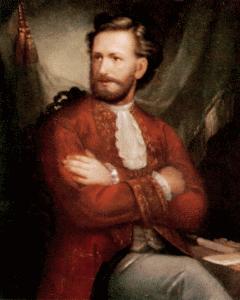Gabriel Cano de Aponte facts for kids
Quick facts for kids
Don
Gabriel Cano de Aponte
|
|
|---|---|
 |
|
| Royal Governor of Chile | |
| In office 17 December 1717 – 11 November 1733 |
|
| Monarch | Philip V |
| Preceded by | José de Santiago Concha |
| Succeeded by | Francisco Sánchez |
| Personal details | |
| Born | 1665 Mora, Spain |
| Died | 11 November 1733 (aged 67–68) Santiago, Chile |
| Spouses | María Camps María Francisca Velaz de Medrano |
| Profession | Lieutenant General |
Gabriel Cano de Aponte was a Spanish soldier who became the Royal Governor of Chile. He served for a very long time, from 1717 to 1733. His time as governor was the longest during the colonial period in Chile's history.
Contents
Early Life and Military Career
Gabriel Cano was born in 1665 in Mora, a town near Toledo, Spain. His parents were Juan Cano Ruiz and Josefa de Aponte Carvajal.
He joined the Spanish army and spent 33 years fighting in Flanders. During his military career, he rose through many ranks. He started as an Alférez (a junior officer, like a second lieutenant). He then became a Brigadier and finally a Marshal, which is a very high military rank.
In 1713, his first wife, María Campos, passed away. They did not have any children.
Promotion and Second Marriage
Gabriel Cano showed great bravery and skill during the War of the Spanish Succession. Because of his excellent performance, he was promoted to Lieutenant General on October 28, 1715. Just three days later, he was chosen to be the Royal Governor of Chile.
On January 5, 1716, he married again. His second wife was María Francisca Velaz de Medrano Navarra y Puelles. They traveled together to Chile and arrived in Santiago on December 17, 1717, for him to start his new role.
Serving as Governor of Chile
As governor, Gabriel Cano faced several challenges.
The Mapuche Uprising
One major event was a conflict with the Mapuche people, known as the Mapuche Uprising of 1723. The Mapuche leader was called Vilumilla. Governor Cano fought against this uprising. The conflict eventually ended with a peace agreement called the Peace of Negrete in 1726.
Controlling Smuggling
In 1725, Governor Cano tried to stop contraband, which means illegal trade or smuggling. However, this was a difficult task. French and Dutch merchants were very clever at smuggling goods. Also, some powerful people in Chile were involved in or helped with this illegal trade. This made it hard for the governor to stop it completely.
His Final Days
Gabriel Cano was known for his love of horses and riding. He was a skilled and innovative horseman.
An Unfortunate Accident
On July 26, 1733, Governor Cano was taking part in a game on horseback. During the game, he fell with his horse, and the horse landed on him. He was badly injured in this accident.
He never fully recovered from his injuries. He passed away three months later, on November 11, 1733. Historians believe his injuries from the fall led to his death.
Additional Information
See also
- Vilumilla
- Arauco War
- Mapuche people
- List of unusual deaths
Sources
| Government offices
|
||
|---|---|---|
| Preceded by José de Santiago Concha |
Royal Governor of Chile 1717–1733 |
Succeeded by Francisco Sánchez |

